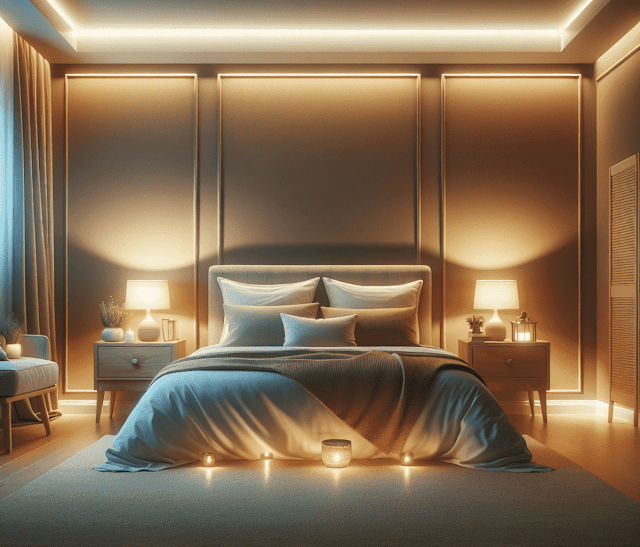Introduction
A good night’s sleep is essential for our health and can be a critical component of migraine self care. It’s as important as eating well and exercising regularly. One crucial aspect of getting quality sleep is having a consistent bedtime routine. The best sleep routine for adults includes activities that help us relax and get ready for bed.
But it’s not just about what you do before going to sleep; it’s also about when you do it. Have you ever wondered why some people are early risers while others prefer staying up late? Or why you still feel tired even after sleeping for a long time?
This article will explore the science of adult sleep cycles to answer these questions. By understanding how our sleep patterns work, we can see why sticking to a regular bedtime is vital for getting the rest we need.
So if you want to learn more about creating a healthy bedtime routine for adults, particularly those dealing with migraines, keep reading! This information could help you wake up feeling refreshed and ready to tackle the day.
The Science of Adult Sleep Cycles
Knowing about adult sleep cycles, deep sleep, REM sleep, and overall sleep health is important. It helps us understand why a regular bedtime can greatly improve our health. Each night, we go through different stages of sleep: light sleep, deep sleep, and REM (Rapid Eye Movement) sleep. Along with other things like our sleeping area, bedtime routine, and daily habits, these stages help us have a good night’s rest.
Sleep Stages:
- Light Sleep: This initial phase acts as the gateway to deeper sleep levels, where you can be easily awakened.
- Deep Sleep: Also known as slow-wave sleep, this stage is crucial for physical recovery and memory consolidation. During deep sleep, the body repairs tissues, builds bone and muscle, and strengthens the immune system.
- REM Sleep: Occurring approximately 90 minutes after falling asleep, REM is the dream phase of sleep. It plays a key role in learning, memory, and mood regulation.
Our sleep and wakefulness are guided by our body’s internal clock, known as the circadian rhythm. This clock works with the daylight and darkness we see every day. It helps us feel awake when it’s light out and sleepy when it’s dark.
The best bedtime matches with this rhythm. This way, adults can get the most out of their sleep. Going to bed when our body clock tells us to helps us have more deep and dream-filled (REM) sleep.
For those seeking relief from stress before bedtime, discovering 10 proven relaxation strategies that combat stress can make a significant difference in transitioning smoothly through these vital sleep stages.
By aligning bedtimes with circadian cues, adults set the stage for a night of high-quality slumber that rejuvenates mind and body alike.
Finding Your Perfect Bedtime Based on Science
Pinpointing the optimal bedtime for adults is crucial for tapping into the restorative power of sleep. Individual needs vary, but science offers valuable insights to help everyone find their personal sweet spot for slumber.
Strategies to Determine Your Optimal Bedtime:
- Assess Your Wake-Up Time: Start with your wake-up time and work backward. If you have a non-negotiable start to your day, calculate approximately 7-9 hours before that time to target the ideal sleep duration for most adults.
- Consider Sleep Duration: Adults typically need between 7 and 9 hours of sleep per night. Understanding your body’s needs can help you set a bedtime that ensures adequate rest.
- Pay Attention to Sleep Signals: Notice when you naturally feel tired in the evening. This can be a cue from your circadian rhythm signaling that it’s nearing time to wind down.
- Adjust Gradually: If your current bedtime doesn’t align with your optimal range, adjust incrementally – about 15 minutes earlier or later every few nights – until you find what works best.
Tips for Honing in on That Ideal Time:
- Keep a sleep diary to track patterns in your energy levels and mood.
- Observe how dietary choices impact your sleep quality; embracing a plant-rich diet like the Green Mediterranean Diet may improve overall well-being and thereby enhance sleep.
- Experiment with different bedtimes and note any changes in how refreshed you feel upon waking.
By tuning into your body’s signals and considering lifestyle factors, you can establish an optimal bedtime for adults that promotes rejuvenating sleep, setting the stage for a healthier, more vibrant life.
Implementing a Consistent and Effective Bedtime Routine
A bedtime routine isn’t just about what you do before sleeping. It’s about creating a routine that helps your body and mind relax and prepare for good sleep. The steps in this routine are important to set up a pattern that works with your body’s internal clock, helping you sleep better and more consistently.
Key Elements of a Successful Bedtime Routine for Adults
The foundation of any good bedtime routine lies in the environment you create. Here’s how to set the stage for slumber:
Create a Sleep-Friendly Bedroom Environment
- Choose the Right Mattress and Pillow: Comfort is king when it comes to sleep. Invest in a mattress that supports your body type and preferred sleeping position. Pillows should also be chosen based on personal comfort as well as neck and spine alignment.
- Control Noise and Light: A quiet, dark room tells your brain it’s time to wind down. Consider blackout curtains or eye masks for light control and white noise machines or earplugs to manage sound levels.
- Temperature Control: Keep your bedroom at a cooler temperature, generally between 60-67 degrees Fahrenheit, which is optimal for sleep.
Incorporate Relaxation Techniques
- Yoga: Gentle yoga can release physical tension and prepare you mentally for sleep. Opt for poses like ‘Child’s Pose’ or ‘Legs-Up-The-Wall’ which are known for their calming effects.
- Meditation: Mindfulness or guided meditation can ease you into a state of relaxation by focusing on breath and releasing thoughts from the day.
- Deep Breathing: Simple deep breathing exercises can activate the body’s relaxation response and make falling asleep easier.
Managing External Factors
Understanding what affects your ability to fall and stay asleep is critical. Take steps to reduce disruptions:
- Reduce caffeine intake in the later part of the day as its stimulating effects can last several hours.
- Limit exposure to blue light emitted by screens before bedtime; this can interfere with melatonin production, making it harder to fall asleep.
- Develop habits that signal the end of the day, such as dimming lights throughout your home or reading a book.
Setting up a good sleep routine means making your space perfect for restful sleep. Keep doing it, even on days off.
Adding habits to your night can improve your sleep. As you get your routine just right, you might find more things that help you sleep better. Maybe a light snack or calming tea works best for you. Pay attention to what makes your body ready for sleep each night.
Healthy Habits and Activities to Include in Your Routine
Creating a consistent pre-sleep ritual is a crucial step in crafting a sleep-friendly bedroom environment and improving sleep quality for adults. This ritual not only prepares the mind and body for rest but also helps reinforce the body’s internal clock, known as the circadian rhythm. Here are some habits and activities to consider:
1. Maintain Regular Sleep and Wake Times
Align your sleep schedule with your natural circadian rhythm by going to bed and waking up at the same time every day, even on weekends.
2. Choose Sleep-Inducing Snacks
Light snacks that contain elements known to promote relaxation, such as bananas or almonds, can be part of your routine. Herbal teas like chamomile or valerian root may also encourage calmness before bedtime.
3. Manage External Factors
Create an environment conducive to sleep by controlling temperature, light, and noise levels. Consider blackout curtains for darkness and white noise machines to drown out disruptive sounds.
4. Relaxation Techniques
Integrate practices such as deep breathing exercises, progressive muscle relaxation, or guided imagery to ease into a state of tranquility.
It is equally important to avoid activities that can impair sleep quality:
- Limit Caffeine Consumption: The stimulating effects of caffeine can linger for hours, so it’s wise to avoid coffee, tea, or other caffeinated beverages well before bedtime.
- Electronic Devices: The blue light emitted by screens on phones, tablets, and computers can interfere with the production of melatonin, a hormone that signals your body it’s time to sleep. Try reading a book or listening to calming music instead.
By embracing these healthy habits and managing external factors effectively, adults can create a bedtime routine that fosters restorative sleep. Remember, personalized routines are most successful when they are enjoyable and easily integrated into daily life.
Seeking Professional Help for Persistent Sleep Issues
When adjustments to bedtime routines and habits don’t lead to better sleep, it could be a sign of an underlying issue. Sleep disorders such as insomnia, sleep apnea, restless legs syndrome, and narcolepsy are more common than many realize and can severely impact the quality of life.
Understanding Sleep Disorders
Sleep disorders are a variety of conditions that disrupt regular sleep patterns, often requiring medical diagnosis and intervention. Some examples include:
- Insomnia: Difficulty falling asleep or staying asleep.
- Sleep apnea: Interruptions in breathing during sleep.
- Restless legs syndrome: Uncomfortable sensations in the legs that cause an urge to move.
- Narcolepsy: Excessive daytime sleepiness and sudden attacks of sleep.
Exploring Insomnia Treatments
When it comes to addressing insomnia, treatments can vary depending on individual needs and the severity of the disorder. Approaches may include:
- Cognitive-behavioral therapy (CBT) for insomnia: Targeting negative thoughts and behaviors that contribute to sleep problems.
- Prescription sleep aids under professional supervision: Medications that can help with falling asleep or staying asleep.
It’s crucial to acknowledge that struggling with sleep is not just a minor inconvenience; it can be detrimental to one’s health and well-being. If experiencing chronic difficulties with sleep quality or duration, reaching out to a healthcare professional is a step in the right direction.
How a Healthcare Professional Can Help
A healthcare professional specializing in sleep medicine can provide a thorough evaluation, which may include:
- A discussion about your sleep history and routines
- Medical tests if a sleep disorder is suspected
- Personalized recommendations for treatment options
Remember that help is available, and with the right support, restful nights are within reach. Addressing persistent sleep issues not only improves nighttime rest but also enhances daytime alertness and overall health.
Conclusion
A good bedtime for adults is not a luxury, it’s a necessity. The science behind adult sleep cycles underscores this fact. By aligning our sleep schedules with our natural circadian rhythms, we can achieve restorative, quality sleep.
Prioritize a consistent and supportive bedtime routine.
This could help reduce muscle sore overall, increase energy levels during the day, and even contribute to long-term health benefits.
Healthy sleep habits are more than just about feeling rested.
They contribute to our overall physical and mental well-being as adults.
Remember, the journey towards better sleep begins tonight!



.png)









